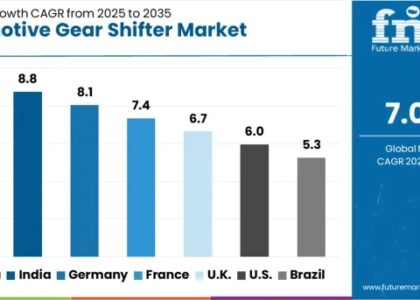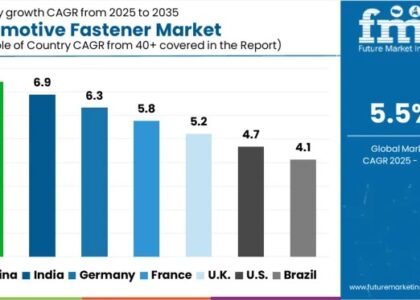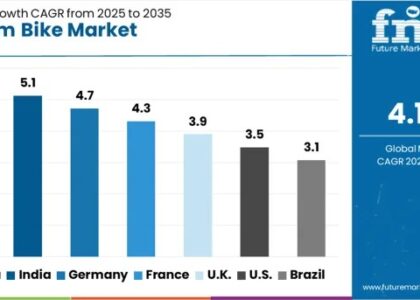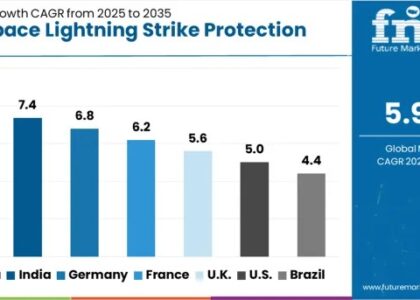By 2032, the global hot fill packaging market is expected to achieve a significant milestone, reaching a market value of US$ 82 billion, with a projected growth rate of 4.5% throughout the forecast period spanning from 2022 to 2032. This anticipated expansion underscores the enduring demand for hot fill packaging solutions across various industries, driven by factors such as the growing popularity of convenience foods and beverages, as well as advancements in packaging technology to enhance product shelf life and maintain freshness. The projected growth rate reflects the market’s resilience and its pivotal role in the packaging industry’s evolution.
In the contemporary beverage industry, hot fill packaging has gained widespread popularity, particularly with the adoption of PET bottles that contribute to extended shelf lives. This liquid food packaging method involves heating the product before filling it into the container. Ideally suited for non-carbonated beverages, soft drinks, and water, hot fill packaging provides an impressive shelf life ranging from approximately 6 to 12 months. Its versatility and effectiveness in preserving product quality make it a preferred choice for manufacturers seeking reliable packaging solutions in the dynamic and competitive landscape of the beverage market.
Request Sample Report: https://www.futuremarketinsights.com/reports/sample/rep-gb-10589
Hot filling also retains the products’ nutritional properties. However, the fact that hot filling needs heavy bottles that are costly can’t be ignored. This factor could restrain the hot fill packaging market in the near future.
Future Market Insights has walked through these facts with future perspectives in its latest market study entitled ‘Hot Fill Packaging Market’. It has its indigenous team of analysts and consultants to look through bottom-up approach in primary, secondary, and tertiary modes of research.
“With realization of the fact that hot fill packaging makes way for longer shelf lives, the global hot fill packaging market is expected to grow on a good note in the forecast period”, says an analyst from Future Market Insights.
Business Growth Drivers:
- Increasing Demand for Convenience Foods: The growing demand for convenience foods due to changing lifestyles and increasing urbanization is a significant driver for the hot fill packaging market. Consumers seek ready-to-eat or easy-to-prepare meals and beverages, driving the need for efficient packaging solutions.
- Preference for Extended Shelf Life: Hot fill packaging allows for extended shelf life without the need for preservatives, making it attractive for both consumers and manufacturers. This aspect contributes to the market growth as brands seek ways to enhance product longevity while maintaining quality.
- Focus on Sustainability: Many hot fill packaging solutions are recyclable or made from sustainable materials, aligning with the increasing consumer and regulatory focus on sustainability. Brands adopting eco-friendly packaging options to reduce environmental impact contribute to the growth of this market.
- Technological Advancements: Ongoing technological advancements in packaging materials and manufacturing processes enhance the efficiency and performance of hot fill packaging solutions. Innovations such as barrier coatings and improved sealing technologies drive market growth by offering better protection and product integrity.
- Expanding Food and Beverage Industry: The growth of the food and beverage industry, particularly in emerging markets, drives the demand for efficient packaging solutions. As more companies enter these markets and existing players expand their product portfolios, the demand for hot fill packaging increases.
- Regulatory Compliance: Stringent regulations regarding food safety and packaging standards drive the adoption of reliable packaging solutions like hot fill packaging. Compliance with regulations ensures product integrity and safety, which is crucial for consumer trust and market growth.
Industry Restraints:
- High Initial Investment: Implementing hot fill packaging systems requires significant initial investment in specialized equipment and infrastructure. This can be a barrier for smaller manufacturers or companies operating in regions with limited capital resources.
- Limited Compatibility: Hot fill packaging may not be suitable for all types of products or formulations. Some products may require specific packaging materials or processes, limiting the applicability of hot fill packaging solutions and potentially restraining market growth in certain segments.
- Competition from Alternative Technologies: Alternative packaging technologies, such as aseptic packaging or cold fill processes, compete with hot fill packaging in certain applications. Depending on factors like product sensitivity, cost-effectiveness, and convenience, manufacturers may opt for these alternatives, affecting the demand for hot fill packaging.
- Concerns Over Plastic Usage: While many hot fill packaging solutions are made from plastic materials, there is growing concern over plastic waste and its environmental impact. This has led to regulatory restrictions and consumer preferences shifting towards more sustainable packaging options, posing a challenge for traditional plastic-based hot fill packaging.
- Logistical Challenges: Hot fill packaging may require specific handling and transportation conditions to maintain product integrity, especially for products with temperature-sensitive formulations. Logistical challenges in maintaining the required conditions throughout the supply chain can pose constraints on the adoption of hot fill packaging solutions.
- Product Innovation and Differentiation: To stand out in a competitive market, brands need to continuously innovate and differentiate their products through packaging design and functionality. This constant need for innovation can pose challenges for hot fill packaging manufacturers in terms of meeting evolving consumer preferences and market demands.
Key Takeaways from Hot Fill Packaging Market
- North America holds a significant market share due to beverages being consumed exorbitantly. As such, energy drinks, flavored beverages, and soft drinks are in greater demand.
- The Asia-Pacific is expected to grow at a rapid pace in the hot fill packaging market due to easy access and affordability of the healthy drinks throughout India and China. Out of these, fruit juices are holding a noteworthy market share.
- Europe is at the matured stage of hot fill packaging market and the scenario is expected to be the same even going forward.
Market Competition-
The established players of the global hot fill packaging market include
- Amcor Plc.,
- San Miguel Yamamura Packaging Corporation,
- Aisapack SA,
- Graham Packaging Company,
- among others.
Competitive Packaging-
- Asahi Beverages, in June 2022, did open upgraded Wulkuraka production facility at South-East Queensland. It was worth US$ 55 Million. The factory thus went on to receive two bottling lines – a blow-fill and a hot-fill.
- Amcor Rigid Packaging, in May 2022, introduced PowerPost (a new technology facilitating production of the bottles that would be 30% lighter constituting recycled material. These bottles also make way for a superlative user experience by prevention of spills on opening the drinks. The company claims of PowerPost to be amongst the advanced lightweight solutions regarding hot-fill beverages.
- Amcor PLC AMCR, in August 2022, did launch a modern-day innovation hub at Jiangyin (China) for providing customers based out of the Asia-Pacific with eco-friendly material science and advanced packaging technologies. The company is known for heavily investing in hot-fill beverage packaging.
- Berry Global, in May 2022, did come up with a novel series of hot fill sauce bottles to maximize consumers’ convenience along with maintaining proper on-shelf appearance. This Nova bottle is available in 500 ml and 250 ml sizes, and consists of clear PP (polypropylene). It has a contemporary curved design. The labeling area is big enough to enable better product branding.
Buy Now/Purchase: https://www.futuremarketinsights.com/checkout/10589
Key Segments Profiled in the Hot Filling Packaging Market
Product Type:
- Containers
- Bottles & Jugs
- Jars
Material:
- Glass-based Hot Fill Packaging
- Plastic-based Hot Fill Packaging
- Polypropylene (PP)
- Polyethylene Terephthalate (PET)
- Others
Capacity:
- Up to 12 Oz
- 13 Oz – 32 Oz
- 33 Oz – 64 Oz
- 64 Oz and Above
End Use:
- Soups Sauces & Spreads
- Juices
- Ready-to-drink Beverages
- Dairy Products
- Nectars
About Future Market Insights (FMI)
Future Market Insights, Inc. (ESOMAR certified, recipient of the Stevie Award, and a member of the Greater New York Chamber of Commerce) offers profound insights into the driving factors that are boosting demand in the market. FMI stands as the leading global provider of market intelligence, advisory services, consulting, and events for the Packaging, Food and Beverage, Consumer, Technology, Healthcare, Industrial, and Chemicals markets. With a vast team of over 5000 analysts worldwide, FMI provides global, regional, and local expertise on diverse domains and industry trends across more than 110 countries.
Contact Us:
Future Market Insights Inc.
Christiana Corporate, 200 Continental Drive,
Suite 401, Newark, Delaware – 19713, USA
T: +1-845-579-5705
For Sales Enquiries: sales@futuremarketinsights.com
Website: https://www.futuremarketinsights.com
LinkedIn| Twitter| Blogs | YouTube






